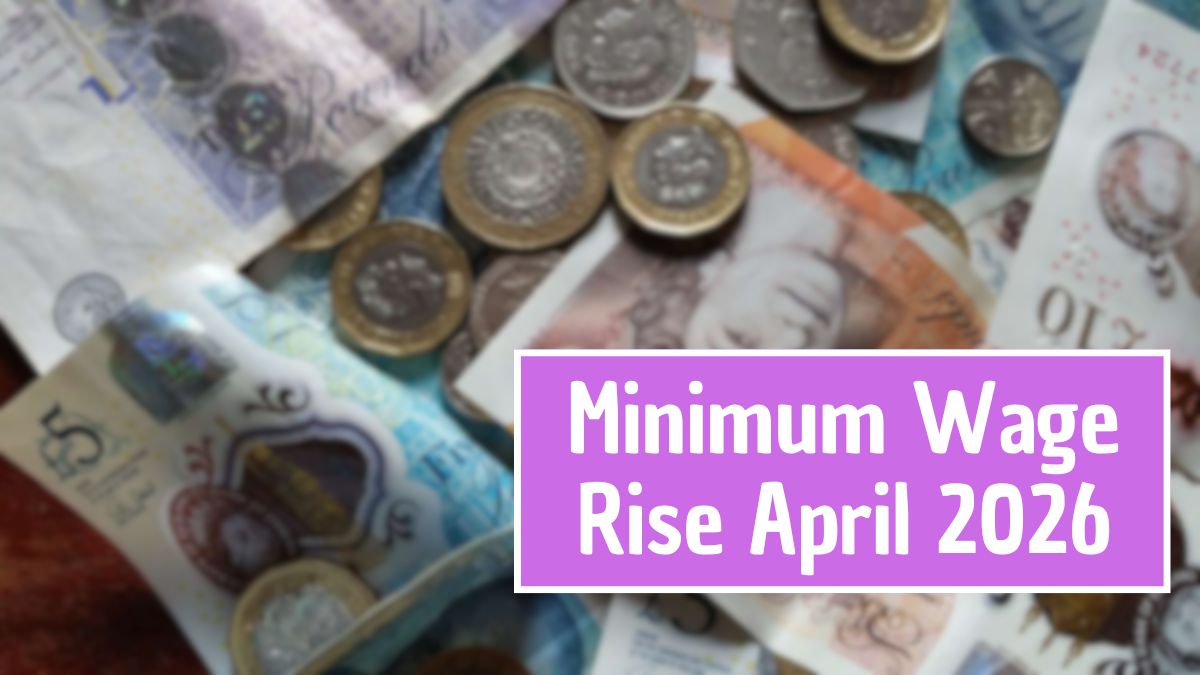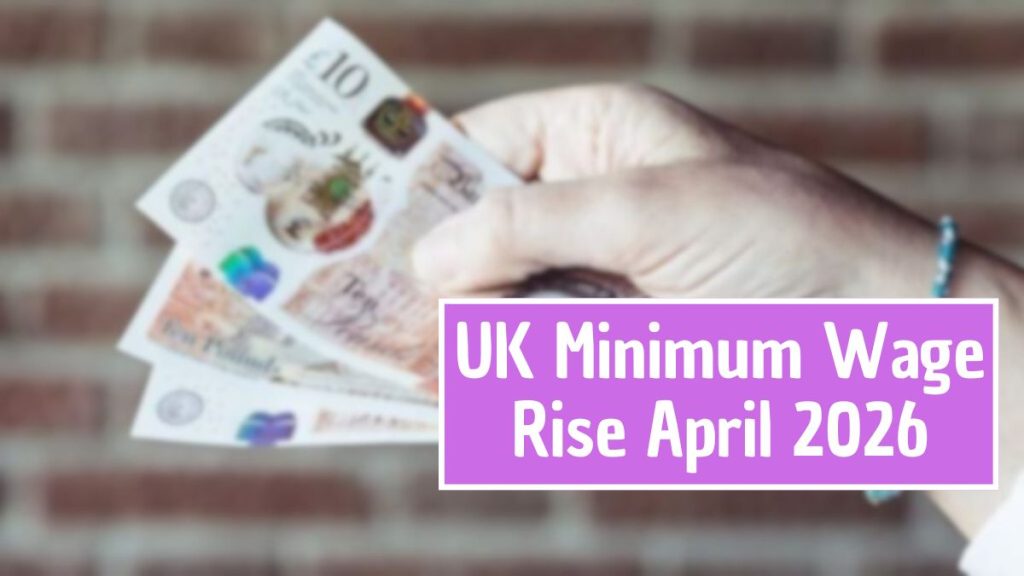This change will affect millions of workers and employers across the country, ensuring that employees receive fairer compensation for their work. Understanding these updates is crucial for both staff and businesses to remain compliant and financially prepared.
The wage rise reflects ongoing efforts to tackle cost-of-living pressures and improve standards for low-paid workers. This guide provides a detailed overview of the new rates, eligibility, impact on employers, and practical advice for employees.
Understanding the National Minimum Wage and National Living Wage

The National Minimum Wage (NMW) and National Living Wage (NLW) are legally enforced pay rates that employers must provide to all eligible workers in the UK.
- The NMW applies to employees under 23.
- The NLW applies to workers aged 23 and over.
These rates aim to guarantee that every employee earns a fair wage, preventing exploitation and ensuring sustainable living standards. In addition to supporting workers, these pay floors contribute to reducing poverty, improving employment equality, and ensuring households can meet essential living costs — from housing to groceries and utilities.
Why the April 2026 Wage Increase Is Crucial
With inflation and the cost of living still high, particularly for essential goods like energy, housing, and food, the April 2026 rise comes at a critical time.
The government’s goal is twofold:
- To help workers keep pace with rising prices and maintain their quality of life.
- To strengthen workforce stability by ensuring fairer compensation for lower-paid jobs.
For employers, it represents both a challenge and an opportunity — increased payroll costs, yes, but also a more motivated and secure workforce.
Official New Minimum Wage Rates from April 2026
The government has confirmed the following new rates effective from April 2026:
| Category | Current Rate | New Rate (April 2026) |
|---|---|---|
| National Living Wage (23+) | £11.44 | £12.50 per hour |
| 21–22 years old | £10.18 | £11.30 per hour |
| 18–20 years old | £8.60 | £9.50 per hour |
| Under 18 | £6.40 | £7.00 per hour |
| Apprentices | £5.28 | £6.50 per hour |
These updated rates are the largest single increase in over a decade, reflecting a strong government push toward pay equality and real living standards.
The rates may vary slightly in certain regions, but overall they apply across England, Scotland, Wales, and Northern Ireland.
Who Qualifies for the April 2026 Wage Increase
The National Minimum and National Living Wage apply to most workers, regardless of the sector they work in. Eligibility depends on a few core criteria:
- Age – Determines whether you receive the NLW or one of the lower NMW brackets.
- Employment status – Both full-time and part-time employees qualify, including casual, seasonal, and zero-hour contract workers.
- Apprenticeship status – Apprentices under 19 or in their first year of apprenticeship are eligible for the apprentice rate.
- Work location – The rules apply uniformly across all UK nations.
Excluded categories include self-employed workers, volunteers, and company directors, as they are not covered under minimum wage laws.
Why This Matters for Millions of Workers
For workers, the rise means a tangible improvement in take-home pay — and relief from the pressure of higher costs.
According to economic analysts, the average full-time employee on the minimum wage could see an annual pay increase of £1,800 to £2,100 depending on hours worked.
It also means:
- Greater financial stability.
- Reduced reliance on credit or government assistance.
- More confidence to plan ahead — from saving to managing bills.
In short, the April 2026 adjustment isn’t just about numbers; it’s about restoring real purchasing power to low-paid workers after years of cost-of-living strain.
What It Means for Employers
Employers will face a direct financial impact as labour costs rise across the board. Key sectors like retail, hospitality, healthcare, and logistics — which employ many minimum wage workers — will see the biggest effect.
Businesses must:
- Update payroll systems with new hourly rates.
- Review budgets to account for increased wage expenses.
- Ensure compliance to avoid legal penalties or fines.
- Communicate clearly with staff about the changes.
Non-compliance can result in back-pay demands, public naming by HMRC, and potential reputational harm.
That said, paying fair wages also helps retain talent, lower turnover, and boost morale — all of which contribute to business sustainability.
The Broader Economic Impact
The wage increase will likely have ripple effects throughout the UK economy. While businesses may face initial financial pressure, experts predict several long-term benefits:
- Higher consumer spending: As workers earn more, they tend to spend more locally, stimulating small businesses.
- Improved productivity: Better-paid employees are often more engaged and loyal.
- Reduced in-work poverty: A key government target in the post-pandemic recovery phase.
Economists expect that while some small firms may initially struggle, the broader impact will help balance economic inequalities and sustain growth.
How Employers Can Prepare (Step-by-Step)
To manage the upcoming changes effectively, employers should take proactive measures now.
- Update Payroll Systems
Input new rates into payroll and HR software early to avoid errors. - Recalculate Overtime and Bonuses
Ensure overtime, holiday pay, and benefits reflect the new hourly wage rates. - Review Employment Contracts
Check all contracts reference the correct pay levels and make necessary amendments. - Communicate with Staff
Inform employees in advance of the new wage increase to maintain transparency and build trust. - Plan Budget Adjustments
Factor in the higher wage bill to prevent cash flow disruptions, especially for small and medium-sized enterprises.
Compliance and Legal Considerations
Employers who fail to pay the correct rates risk:
- Financial penalties up to 200% of unpaid wages (capped at £20,000 per worker).
- Public listing by HMRC as a non-compliant business.
- Potential tribunal claims for wage underpayment.
Ensuring compliance not only avoids penalties but reinforces a company’s commitment to fair employment practices.
Apprentices and Young Workers
The new rates include a substantial boost for apprentices and younger workers, often the most vulnerable in the labour market.
- Apprentices will see a rise from £5.28 to £6.50 — a 23% jump.
- Under-18 workers will gain nearly £0.60 per hour.
The government hopes this will make apprenticeships more attractive, helping bridge skills gaps and encourage early career participation.
Impact Across Sectors
Some industries will feel the effect of this increase more sharply than others:
- Retail and Hospitality: High volumes of minimum-wage staff mean larger wage bill increases.
- Social Care and Health Services: Labour-intensive operations may require funding support from local councils or the NHS.
- Manufacturing and Warehousing: Productivity investments and automation could offset wage pressures.
- Education and Apprenticeship Providers: May need to rebalance budgets to support higher trainee costs.
Despite challenges, experts note that these industries also stand to gain from better employee retention and morale.
Employee Advice – What You Should Do Next
If you are a worker affected by the upcoming wage change:
- Check your payslip each month to confirm your hourly rate meets the new legal threshold.
- Contact HMRC if you believe you’re being underpaid.
- Update your budget or benefits to reflect the higher income.
- Keep records of working hours and payments in case disputes arise.
- Review eligibility for any benefits or tax credits that may change due to your higher earnings.
Employer Advice – Staying Ahead of the Change
Employers can take advantage of this period to:
- Reassess pay structures across all levels, ensuring fairness and competitiveness.
- Invest in training to enhance productivity and offset higher wage costs.
- Adopt digital payroll tools to minimize administrative burden.
- Engage employees with transparent communication about pay updates.
A well-prepared employer not only meets compliance requirements but builds long-term trust and loyalty among staff.
The Road Ahead: Fair Pay and Economic Balance
The April 2026 rise signals the UK’s continued commitment to a fair wage economy. For workers, it’s a long-awaited step toward financial security; for employers, it’s an opportunity to invest in a stronger, more motivated workforce.
While challenges remain, particularly for small businesses, the balance between fairness and sustainability appears to be at the heart of this decision.
FAQs
1. What is the new National Living Wage from April 2026?
The National Living Wage (for workers aged 23 and over) will rise to £12.50 per hour from April 2026.
2. Will part-time and zero-hour contract workers also benefit?
Yes. All eligible workers, including part-time, seasonal, and zero-hour employees, must receive at least the new minimum or living wage.
3. Do apprentices get the same increase?
Apprentices will see a rise from £5.28 to £6.50 per hour if they are under 19 or in the first year of their apprenticeship.
4. What happens if an employer fails to pay the correct wage?
Employers can face financial penalties, be named publicly by HMRC, and may have to repay underpaid wages in full.
5. Can self-employed workers claim the minimum wage?
No. The self-employed are not covered by NMW or NLW laws. These rules apply only to workers and employees under a contract of employment.















